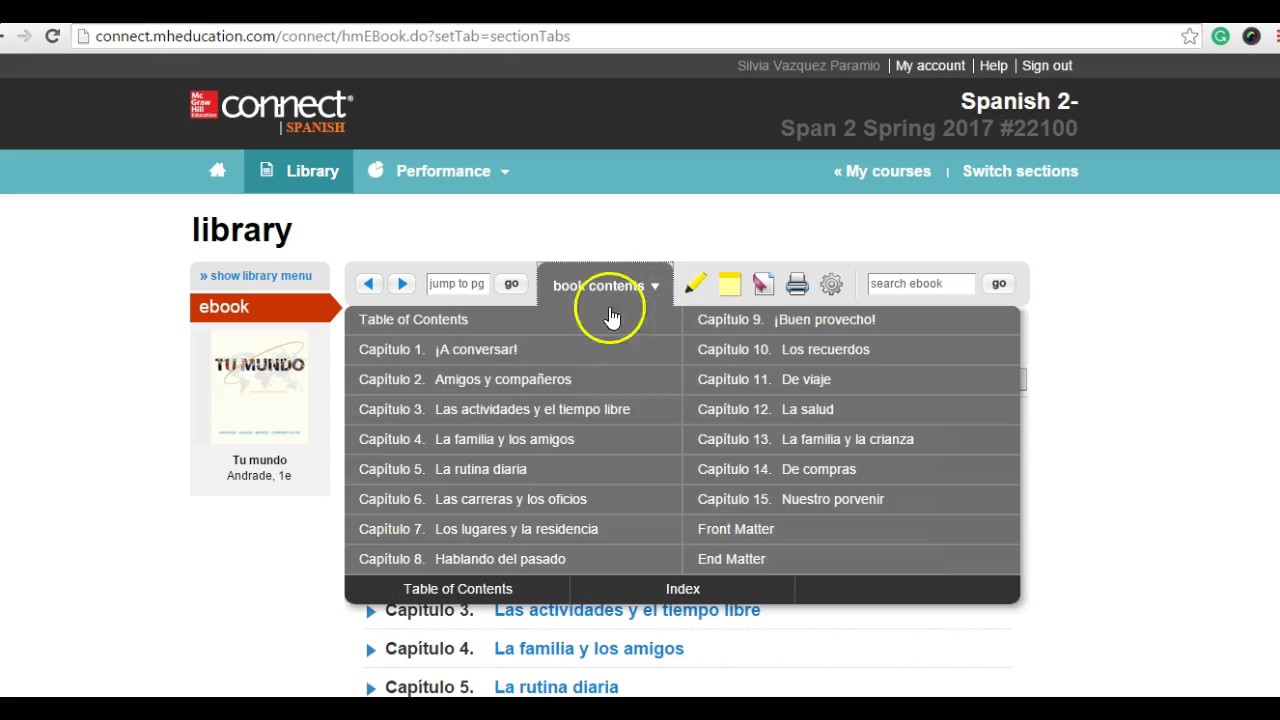Introduction
Welcome to the digital age, where eBooks have become a popular choice for book enthusiasts. With the convenience and portability they offer, it’s no wonder that more and more people are opting to download eBooks in PDF format.
Downloading an eBook as a PDF allows you to easily access and read your favorite books on various devices, such as e-readers, tablets, and even smartphones. Whether you’re an avid reader or just want to explore a new literary adventure, downloading eBooks as PDFs gives you the flexibility to enjoy your reading experience anytime, anywhere.
However, with the abundance of websites and platforms offering eBooks, it’s important to choose a trusted source to ensure a seamless and secure downloading process. In this guide, we will walk you through the steps of downloading an eBook as a PDF, helping you make the most of your digital library.
Before we dive into the process, it’s worth noting that there are countless websites and platforms that provide free as well as paid eBooks. It’s essential to exercise caution and choose a reliable source that offers legitimate and legal downloads. By opting for reputable platforms, you minimize the risk of encountering malware or copyright infringement issues.
In the following sections, we will discuss the step-by-step process of downloading an eBook as a PDF, covering everything from choosing a trusted website or platform to saving and organizing your downloaded eBooks. By following these steps, you’ll be able to embark on a reading journey in the digital realm with ease.
Step 1: Choosing a Trusted Website or Platform to Download eBooks
When it comes to downloading eBooks as PDFs, the first and most crucial step is to choose a trusted website or platform. With a plethora of options available, it’s essential to ensure that the website you choose offers legitimate and high-quality eBooks.
One of the most reliable sources for eBooks is online bookstores. Websites like Amazon Kindle Store, Barnes & Noble, and Kobo offer a vast collection of eBooks in various genres. These platforms not only provide a wide range of options but also prioritize customer satisfaction and security.
Alternatively, there are numerous websites that specialize in offering free eBooks. Some popular choices include Project Gutenberg, Open Library, and ManyBooks. These sites host a wide array of public domain and open access eBooks, allowing you to explore literary classics and contemporary works without spending a dime.
When choosing a website or platform, it’s important to consider factors such as user reviews, website reputation, and security measures. Look for websites with positive feedback and a transparent approach to eBook distribution. Trusted platforms typically have clear guidelines regarding copyright issues and ensure that their eBooks are legally sourced.
Additionally, pay attention to the format compatibility of the eBooks offered. While PDF is a universally accepted format, some platforms might offer eBooks in other formats as well. Consider your preferred reading device and check if the website provides eBooks that are compatible with it.
Another factor to consider is the availability of a search function. A website with a robust search feature allows you to find specific titles or authors easily, saving you time and effort. Look for websites that provide filters for genres, publication dates, and ratings, enabling you to discover new books that align with your interests.
Ultimately, choosing a trusted website or platform ensures that you have a seamless and enjoyable eBook downloading experience. It guarantees that you access a wide range of quality eBooks while minimizing the risk of encountering malware or copyright infringement.
Step 2: Searching for the eBook You Want to Download
Now that you’ve chosen a trusted website or platform, the next step is to search for the eBook you want to download. Whether you have a specific title in mind or you’re exploring new genres, the search function provided by the website can help you find your desired eBook quickly and efficiently.
Start by locating the search bar on the website or platform. It is usually located prominently on the homepage or in the navigation menu. Once you find it, enter the title, author, or keywords related to the eBook you’re looking for.
Refine your search by using filters. Many websites offer filters to narrow down your results based on categories, genres, authors, or publication dates. These filters help you find eBooks that align with your preferences and make browsing more convenient.
Experiment with different search terms if you’re not finding what you’re looking for. Sometimes slight variations in keywords or searching by different criteria can lead to more accurate results. Don’t hesitate to explore different categories and genres to discover new books that might pique your interest.
Pay attention to the search results page. It typically displays a brief description, ratings, and reviews of each eBook. Take the time to read these details to get a better understanding of the book’s content and quality. Additionally, look for any special offers, discounts, or featured eBooks that may catch your attention.
Don’t overlook user reviews and ratings. These can provide insights into the quality and popularity of the eBook. It’s worth considering both positive and negative reviews to make an informed decision.
If you’re struggling to find a specific eBook on the website you’ve chosen, consider exploring other trusted platforms or online bookstores. Different websites might have a different selection of eBooks, so it’s worth expanding your search to increase your chances of finding what you’re looking for.
Remember that patience is key during the search process. Sometimes it takes a bit of time and effort to find the perfect eBook. Enjoy the journey of exploring different titles and authors, and keep refining your search until you discover the eBook that resonates with you.
Step 3: Selecting the eBook Format as PDF
After finding the eBook you want to download, the next step is to select the desired format. Since our goal is to download eBooks as PDFs, ensure that the website or platform offers this format option.
Typically, websites or platforms provide various format options for eBooks, including EPUB, MOBI, and PDF. EPUB and MOBI are commonly used formats for e-readers, while PDF is widely compatible across different devices.
To select the PDF format, locate the format option on the eBook’s page. Look for a drop-down menu or a button that allows you to choose the format. In some cases, the PDF format might be the default option, so you won’t need to make any changes.
If the website or platform offers additional file types, ensure that you select the PDF format specifically. This guarantees that you’ll be able to access and read the eBook on various devices without any compatibility issues.
It’s worth noting that the PDF format retains the original formatting and layout of the eBook, making it a popular choice for those who want to experience the book as intended by the author. PDF files are also easy to navigate and offer interactive features such as clickable table of contents, bookmarks, and annotations.
Before finalizing your selection, take a moment to review any additional information or options related to the PDF format. Some websites provide options to customize the PDF settings, such as adjusting the font size, margins, or line spacing. Explore these customization options to enhance your reading experience.
Once you have selected the PDF format, double-check the selection before proceeding to the next step. Confirm that you have chosen the correct format and that the website or platform will generate the eBook download in PDF format.
By ensuring that you select the eBook format as PDF, you’ll have a file that is accessible, easy to read, and compatible with various devices and software.
Step 4: Checking for Any Download Restrictions or Requirements
Before proceeding with the eBook download, it’s important to check for any download restrictions or requirements that may be in place. This step ensures a smooth and hassle-free downloading experience.
Start by reviewing any terms of use or download policies provided by the website or platform. Some platforms may have specific restrictions in place, such as a maximum number of downloads per user or limitations on sharing the downloaded eBook. It’s crucial to understand and comply with these guidelines to avoid any issues.
Next, check if there are any requirements for the download process. Some websites may require you to create an account or sign in before downloading an eBook. Ensure that you have fulfilled any necessary registration or login requirements to proceed with the download.
Additionally, pay attention to the file size of the eBook. PDF files can vary in size depending on the content and formatting. If you have limited storage space on your device, it’s important to ensure that you have enough space to accommodate the download.
In some cases, you might come across eBooks that require additional software or applications to be installed on your device. Verify if any specific software or applications are needed to open and view the downloaded PDF file. Popular PDF readers such as Adobe Acrobat Reader are often sufficient, but it’s always a good idea to double-check for any specific requirements.
If the website or platform offers different download options for PDF files, consider choosing the one that suits your needs. Some websites may provide options for compressed versions of the PDF, which can help reduce file size and download time. Alternatively, they may offer higher quality PDF files for those who prioritize image resolution and clarity.
Lastly, make sure to read any user reviews or comments related to the download process. Other users may have left valuable feedback regarding any issues or technical difficulties they encountered. This information can help you anticipate any potential challenges and find solutions in advance.
By checking for any download restrictions or requirements beforehand, you can ensure a seamless and trouble-free eBook download experience. It’s better to be aware of any limitations or prerequisites early on, saving you time and avoiding frustrations.
Step 5: Downloading the eBook as a PDF File
Now that you’ve confirmed there are no restrictions or requirements, it’s time to proceed with the actual download of the eBook in PDF format. Follow these steps to successfully download your chosen eBook:
- Locate the download button or link on the eBook’s page. It’s typically labeled as “Download,” “Download PDF,” or something similar. The button is often prominently displayed and easily identifiable.
- Click on the download button to initiate the download process. Depending on your browser and device settings, you may be prompted to choose a destination folder or the download may begin automatically.
- Choose a location on your device where you want to save the PDF file. It could be your Downloads folder or any other folder where you prefer to store eBook files. Make sure you remember the chosen location for easy access later.
- Allow the download to complete. The time it takes will vary depending on the size of the PDF file and the speed of your internet connection. Ensure that you have a stable internet connection throughout the download process.
- Once the download is complete, navigate to the folder where you saved the PDF file. Double-check that the file name matches the eBook you intended to download to avoid confusion.
It’s a good practice to scan the downloaded file with an antivirus program or security software to ensure that it is safe to open. This step helps protect your device from potential malware or viruses that could be disguised as PDF files.
After confirming the safety of the file, double-click on it to open and access the eBook. The PDF reader installed on your device should automatically launch and display the content of the eBook.
Once the eBook is open, you can navigate through the pages, bookmark your progress, and enjoy the reading experience at your own pace. PDF files offer various features, such as zooming in and out, searching for specific keywords, and adding annotations, enhancing your reading experience even further.
Remember to keep a backup of your downloaded eBook in a safe location, such as an external hard drive or cloud storage. This ensures that you can access your eBook even if you switch devices or encounter any unexpected data loss.
By following these steps, you can successfully download your chosen eBook as a PDF file and embark on an immersive reading journey at your convenience.
Step 6: Saving and Organizing Your Downloaded eBooks
Once you have downloaded your eBooks in PDF format, it’s important to save and organize them for easy access and an organized digital library. Follow these steps to efficiently manage your downloaded eBooks:
- Create a dedicated folder on your device or computer specifically for storing your eBooks. This folder can be named “My eBooks,” “Digital Library,” or any other title that resonates with you. Having a central location for your eBooks helps keep them organized and easily accessible.
- Within the main folder, create subfolders based on different genres, authors, or any other categorization that suits your reading preferences. This allows you to sort and locate eBooks quickly based on your desired criteria.
- Move the downloaded PDF files into their respective folders. If you have multiple eBooks by the same author or in the same genre, consider creating subfolders within the main category folder to further categorize and organize the eBooks.
- Rename the eBook files if desired. This step is optional but can be helpful for easier identification. Renaming the files to include the title or author’s name can make it simpler to find the eBook you’re looking for at a later date.
- Consider using eBook management software or apps to help organize and track your collection. There are various software applications available that allow you to create virtual bookshelves, add tags or labels, and even sync your library across multiple devices.
- Backup your eBooks regularly. To ensure the safety and longevity of your digital library, it’s essential to have a redundant backup system in place. Consider backing up your eBooks on an external hard drive, a cloud storage service, or both.
Once you have set up a proper organizational system and backup routine, you’ll be able to access your eBooks easily and efficiently. Whether you’re in the mood for a specific genre or want to continue reading from where you left off, you’ll have your digital library neatly organized and at your fingertips.
Remember to periodically review and declutter your eBook collection. Remove any eBooks that you have already read or are no longer of interest to keep your library streamlined and clutter-free. This ensures that you have a curated collection that reflects your current reading preferences.
By following these steps, you can save and organize your downloaded eBooks in a systematic and personalized manner, creating a digital library that enriches your reading experience and helps you easily locate your favorite books.
Conclusion
Downloading eBooks as PDFs has revolutionized the way we access and enjoy literature. In this guide, we have explored the step-by-step process of downloading eBooks as PDF files, from choosing a trusted website or platform to saving and organizing your downloaded eBooks.
By selecting a reputable source for eBook downloads, you ensure a secure and reliable experience. Take the time to research and choose platforms that prioritize user satisfaction and offer a wide range of high-quality eBooks.
Once you’ve found the eBook you’re interested in, selecting the PDF format ensures compatibility across multiple devices and retains the original formatting of the book. With PDF files, you can enjoy interactive features and an immersive reading experience.
Checking for any download restrictions or requirements is essential to avoid any potential issues during the downloading process. Always read the terms and conditions provided by the website or platform and make sure your device and storage space are suitable for the download.
After successfully downloading the eBook as a PDF file, it’s crucial to save and organize your eBooks for easy access. Create a dedicated folder structure, move the PDF files into corresponding categories, and consider using eBook management software to streamline your digital library.
Lastly, don’t forget to regularly back up your eBook collection to protect your investment. Having multiple backup options, such as external hard drives and cloud storage, ensures that your eBooks are safe and accessible even in the event of a device failure or data loss.
Now armed with the knowledge of how to download and manage eBooks as PDFs, you can embark on an endless literary journey. Explore new genres, discover new authors, and immerse yourself in the captivating world of literature, all at the convenience of your fingertips.
So, what are you waiting for? Start building your digital library today and embrace the convenience and joy that comes with downloading eBooks as PDFs.

























